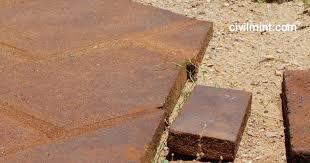This article is related to very inventive construction material ‘Ferrock’.
Let’s take a deep dive into the article.
Ferrock is an environmentally friendly building material used as a substitute for cement. It is mainly made from recycled materials such as scrap iron and silica from crushed glass. Steel dust reacts with carbon dioxide to form iron carbonate, which becomes Ferrock after solidification.

The hardening process occurs when a mixture of steel dust and silica is mixed with iron rock and water and exposed to high concentrations of carbon dioxide.
Ferrock is five times stronger than concrete made with ordinary Portland cement. It is also more flexible than conventional concrete and can withstand large compressive stresses caused by seismic forces.
Table of Contents
Ingredients of Ferrock
Ferrock consist of three main components.as given below.
- Iron-rich ferrous rock
- Waste steel dust
- Silica from ground-up glass
Important Characteristics of Ferrock
- Ferrock is 5 times stronger than concrete. Normally it is between 34.5 MPa and 48 MPa, reaching 69 MPa in some Ferrock tests.
- Ferrock is more flexible than conventional concrete. Therefore, it withstands movement and pressure without tearing.
- Compared to concrete, compressive stress due to seismic force is greater.
- Fresh iron hardens quickly and takes about a week to reach its final strength.
Advantages of Ferrock
- About 95% of Ferrock components are recycled materials.
- In contrast to cement, which is made from chalk and clay, it absorbs carbon dioxide during manufacturing.
- Ferrock is chemically relatively inert, making it suitable for offshore projects.
- Additionally, sea salt increases the strength of ferrock.
- Economical for small projects.
- Ferrock is an excellent material for the construction of pipes and tubes as it is resistant to oxidation, UV light, corrosion, chemicals, rot and rust.
Some drawbacks of Ferrock Material
- Ferrock is uneconomical for large projects such as roads and highways due to the limited supply of materials needed to manufacture Ferrock.
- The main constituents of iron rock are silica and scrap iron, both by-products of other industries.
- As steel becomes a mainstream building material, the cost of its components will rise, potentially making steel more expensive to manufacture.
Applications/ Uses of Ferrock
Ferrock is approved for use on slabs, bricks, paving, paving, breakwaters and walls. It is proposed to be implemented in a pilot project in the marine environment.
